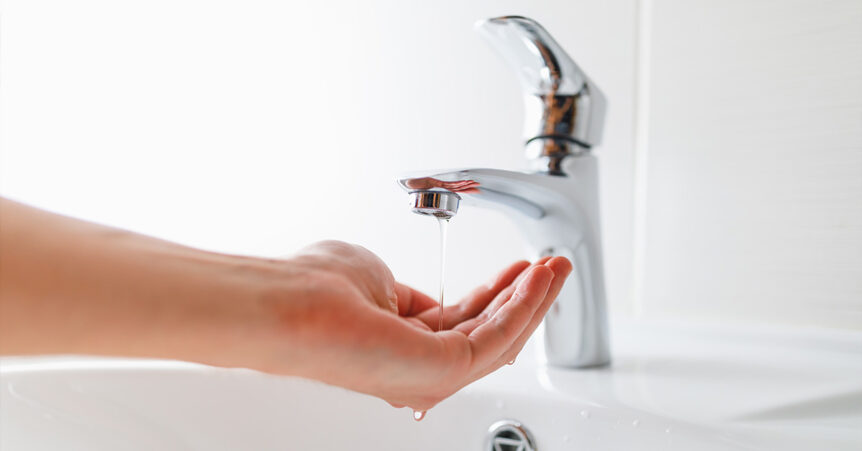- Low water pressure? Discover the top causes—pipe buildup, leaks, municipal issues, and more—and learn how Siouxland homeowners can fix them.
Introduction
Low water pressure isn’t just inconvenient—it can signal underlying plumbing issues that cost you money and comfort. Slow showers, dry faucets, and weak appliances are telltale signs that both homeowners and plumbers watch closely.
If you live in Siouxland—covering Sioux City, South Sioux City, North Sioux City, and surrounding counties—your home’s water pressure may be affected by hard water, aging plumbing, or seasonal changes.
In this article, we’ll explore 8 common causes of low water pressure, what symptoms to look for, DIY checks you can do at home, and when to call in the pros. Whether you’re dealing with a sudden drop or consistent weak flow, understanding these causes can help you act before minor annoyances become major repairs.
1. Partially Closed Isolation or Supply Valves
Cause & Symptoms
The main shut-off valve or under-sink supply valves might be partially closed. This restricts flow, causing uneven pressure throughout your home.
DIY Fix
Trace your service line from the meter to the house. Ensure the main valve is fully open (parallel to pipe). Also check individual fixture shut-offs.
Prevention
Label valves clearly and include valve checks in your seasonal plumbing maintenance routine.
2. Sediment Buildup in Pipes or Fixtures
Cause & Symptoms
In areas with hard water—like Siouxland—mineral deposits accumulate in pipe elbows, aerators, and showerheads, reducing flow.
DIY Fix
Remove and soak aerators in vinegar overnight; clean showerheads; consider installing a whole-home water softener.
Prevention
Install a sediment filter at the water supply and flush the water heater annually to reduce mineral buildup.
3. Leaks in the Plumbing System
Cause & Symptoms
Even small hidden leaks (behind walls, under slabs) can steal water volume, reducing pressure. Symptoms include unexplained water bills or damp areas.
DIY Fix
Monitor your water meter while everything is off. A rising reading indicates a leak. Listen in crawl spaces or use moisture meters.
Prevention
Annual plumbing inspections with camera or pressure tests help catch hidden leaks early.
4. Corroded or Aging Pipes
Cause & Symptoms
Old galvanized steel or corroded copper pipes can restrict flow internally. Homes over 50 years old are especially vulnerable.
Professional Check
Inspect the service line and interior pipes. Corroded piping may need full or partial repiping.
Prevention
Consider repiping key sections, especially if frequent leaks or slow flow become common.
5. Water Pressure Regulator Failure
Cause & Symptoms
Pressure regulators reduce high municipal pressure to safe home levels. If malfunctioning, they restrict flow too much.
DIY Test
Attach a pressure gauge to an outside spigot. Ideal pressure: 50–60 psi. Less than that may require regulator replacement.
Preventive Step
Have your valve tested annually—especially if experiencing wide pressure fluctuations.
6. Municipal or Supply System Issues
Cause & Symptoms
Pressure drops can also stem from municipal work, water main breaks, or line repairs. Local system demands (like hydrant use) can cause temporary low pressure.
How to Check
Visit your city utility website or call the Sioux City water department; ask neighbors if they’re experiencing the same issues.
Prevention
Install a household pressure-sensing reservoir tank to buffer temporary dips and ensure consistent flow.
7. High Demand During Peak Times
Cause & Symptoms
Simultaneous water use—multiple showers, dishwasher, and laundry—dumps pressure for everyone else.
Peak-Time Test
Monitor when pressure dips (e.g. mornings, evenings). If consistent, staggering usage can help.
Long-Term Solution
A pressure tank helps smooth out peaks or, alternatively, call a plumber about increasing supply line size.
8. Clogged Fixture Shut-Off Valves or Aerators
Cause & Symptoms
Valves and fixtures with internal flow restrictors or debris screens may get clogged, causing low flow at only certain fixtures.
DIY Fix
Unscrew aerators, clean, and soak. Clean or replace inline faucet filter screens.
Prevention
Clean these annually; low-cost and prevents recurring issues.
When It’s Time to Call A+ Plumbing
If your low-pressure problem is persistent, widespread, or DIY-unresolved, it’s time to call professionals. At A+ Plumbing, we provide:
- Licensed, Sioux City–based plumbers
- Full diagnostic inspections (including cameras and pressure testing)
- Repiping, valve replacement, softener installation
- Prompt response across Siouxland—call today to restore your home’s water flow
Conclusion
Low water pressure is annoying—and often a sign of hidden issues. By understanding the eight common culprits—from supply valves and mineral buildup to municipal dips and aging pipes—you can apply DIY fixes and strategic upgrades.
For Siouxland residents, hard water and seasonal cycles make proactive plumbing care vital. With routine maintenance, pressure checks, and professional intervention when needed, you’ll enjoy strong, consistent flow—and avoid costly repairs down the road.

